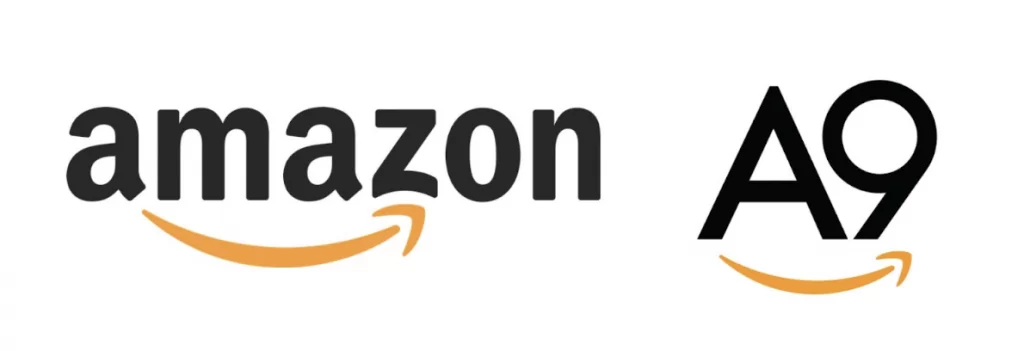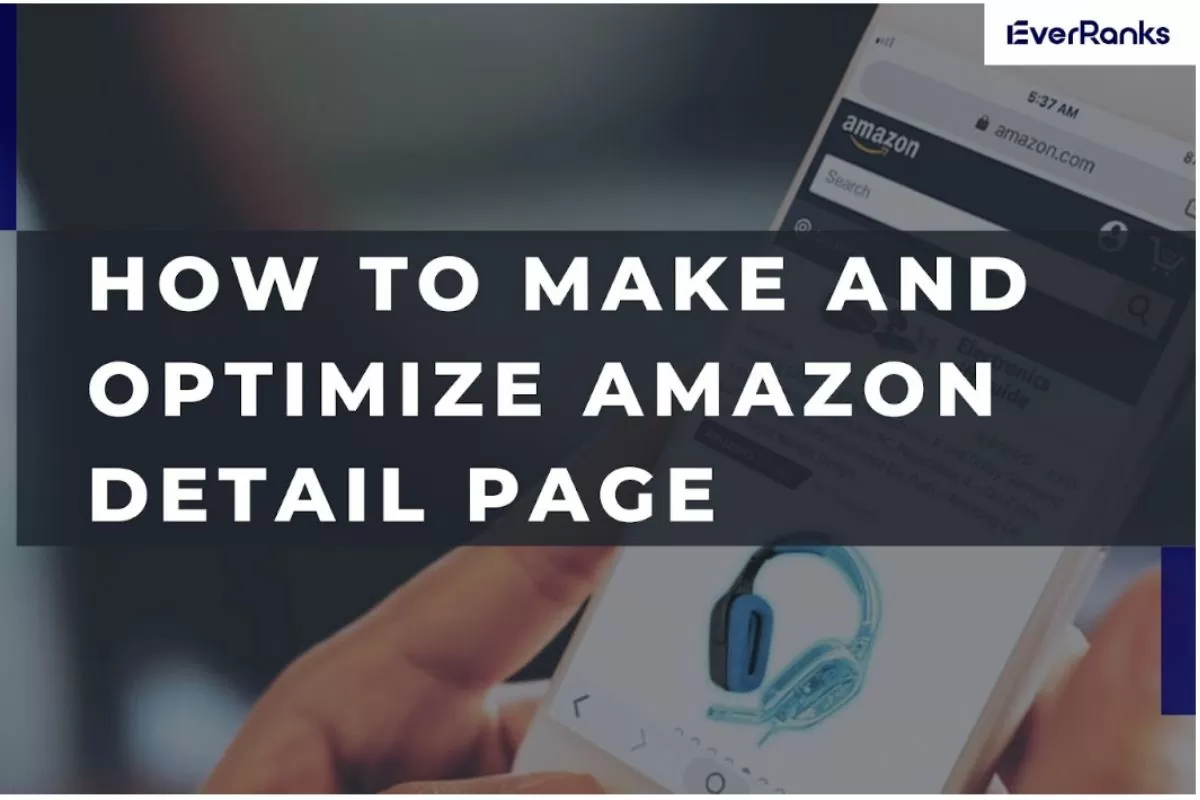All too often, we only think of Google when we think of SEO services or SEO companies. And, of course, you want high search engine rankings. However, your website isn’t the only place where you can sell your products on the internet. If you have a product page on Amazon, you want customers to find it, just like you want your website to appear on the first search engine results page (SERP) for your industry keywords.

It’s critical to understand that Amazon’s search algorithm (such as the Amazon A9 search engine) differs from any Google or Bing algorithm in terms of surfacing results. You’ll have a difficult time analyzing search engine optimization Amazon from the standpoint of web SEO. This is because Amazon is, first and foremost, a purchasing platform. Here is an Amazon SEO checklist to help your products rank high on the platform.
What is Amazon SEO and why is it important?
Search engine optimization Amazon (SEO Amazon) is the process of optimizing product listings on Amazon.com to help them rank higher in product searches. A few simple steps can improve product search listings, increase sales, and help customers find your brand.
Top 13 Best Amazon SEO Tool Helps You Increase Sales

You can use SEO tactics as an Amazon seller to:
- Drive more traffic to product listings
- Increase the visibility of your product and brand
- Increase conversion rates and revenue growth.
How Does Amazon SEO Work?

1. Amazon search box
Customers can look for items by typing a term or phrase into the search box at the top of the Amazon.com homepage. Online shoppers can use the Amazon search box, which includes a drop-down menu of departments, to quickly find products. Shoppers can also use general keywords to narrow their search. Amazon returns relevant results for the word or phrase, and the customer can refine the search to narrow the results.
2. Search filters
Customers can use various filters while searching for products to display search results in a specific order, such as:
- Department
- Best-Selling Items
- New releases or new arrivals
- Items in the spotlight
- Customer feedback
- Price, whether high or low
- Devices and digital content
- Shakers and Movers (the top gainers in sales over the last 24 hours)
- Features and programs (such as Subscribe & Save, Small & Medium Businesses, and more)
3. Search results page
Among the factors that can influence search results are:
- Product names
- Product specifications
- Image optimization
- Specifications of the product
- Competitive Pricing
To improve your ranking in Amazon search results, you can use search engine optimization Amazon to improve each of these elements.
4. Sponsored Products
Sponsored Products are pay-per-click (PPC) ads that sellers can use to promote individual product listings in Amazon stores. They are available to sellers who have a Professional seller account and are registered with the Amazon Brand Registry. Advertisements appear on product detail pages as well as shopping results pages.
Amazon will generate and match ads to shopping queries automatically. Sponsored Products can help you reach high-intent shoppers who are actively looking for similar products to those you’ve listed.
5. Amazon sales rank
Amazon assigns a rating to all sellers based on seller performance metrics such as account health, reviews, product price, and other factors. In general, the higher you rank, the greater your selling potential.
About Amazon’s Search Algorithm: Algorithm A9, A10
What Is Amazon’s A9 Algorithm?

A9 is Amazon’s product ranking algorithm, and it displays results based on queries, keywords, or key terms entered into its search box. Customers’ previous purchases, purchasing behaviors, and a few other factors influence the results displayed.
The algorithm determines which products to show to prospective buyers and how high those products should rank based on factors such as:
- Keyword or search query relevance
- Customer preferences and behavior in the past
- The number of times a specific product has been purchased previously.
There are numerous other factors besides the ones mentioned above. Because A9 is Amazon’s corporate top secret, its functionality is unknown. The algorithm’s complexities could be worth millions and millions of dollars. As a result, the confidentiality of how it works is well maintained.
What is Amazon’s A10 Algorithm Search Engine?
Amazon A10, an Amazon subsidiary based in Palo Alto, California, created its search engine technology to help customers match their search queries with the most relevant products on the Amazon platform. All sellers consider the A10 search engine to be the brains behind the entire search engine optimization Amazon process, so understanding how the A10 algorithm works is critical.
The A10 search engine’s cognition is heavily focused on “revenue per click,” which is Amazon’s ultimate goal. Every time a customer searches for a product on the platform, he or she should be matched with the best possible options from the Amazon catalog, increasing the likelihood of generating sales and revenue.
13 tips to improve your website’s rankings
Listing SEO Amazon in 8 steps

Consider search engine optimization for Amazon to be a continuous process that will assist you in engaging with Amazon’s 300 million customers.
Begin by incorporating optimization into your e-commerce business strategy. You can also concentrate your efforts on the following components of a product listing:
Let’s go over how to improve each of these aspects of a product listing from an SEO company standpoint.
Rank-Related Amazon Factors for Relevance
Keyword
Make a comprehensive keyword list. Keywords are the words and phrases that people look for when conducting an online search. Consider the products you offer and put yourself in the shoes of the customer. What words or phrases will they enter into the Amazon search box to find the products they are looking for?
How do customers find similar products to yours? Try the following ideas for keywords to incorporate into your SEO strategy:
- Fill in the Amazon search box with a variety of words and phrases. Then, look through the drop-down suggestions and begin compiling a list of keywords for similar listings.
- Use competitor results to help you create your own listings. Experiment with similar Amazon.com searches to see what’s already available. After that, compare product search terms.
- For more ideas, look through Amazon’s suggested and related item categories.
- Consider long-tail and short-tail keywords as you compile your list.
- The Amazon search box’s auto-complete feature is a great way to find popular long-tail keywords related to your product.
Product pictures
Customers can visually evaluate and compare key features when they use high-quality images. Multiple images allow them to view the product from various perspectives and can persuade a customer to choose one search result over another. Product images that are effective capture a customer’s imagination and inspire them to make a purchase.
Images should depict the product in action, from various angles, and highlight various features.
Here are a few more things to consider when taking photos:
- At least one product image is required for each detail page. Six images and one video are sufficient.
- Images should be clear, informative, and visually appealing.
- Images must have a white background and take up at least 85% of the available image space.
- To improve listing quality, use 500 x 500 or 1000 x 1,000 pixels.
Use the following guidelines to evaluate your image quality:
- In terms of size, color, and accuracy, the image matches the product description.
- The image is a photograph rather than a drawing.
- The photograph was taken from a flattering angle.
- The product is well-lit and focused.
- Highlights and shadows do not obscure close-up shots.
- The image depicts the entire product.
- Backgrounds are kept simple and clean to avoid drawing attention away from the product.
- As many different images as possible should be provided. Swatch images and alternate images are allowed in many product categories.
Product Title
You only have a few seconds to capture a shopper’s attention. One of the primary fields used by Amazon and search engines to determine the relevance of a detail page as part of a customer search is the product title (product name). You can do a few things to increase the likelihood of a customer clicking on a title:
- Your product title should be the same as what appears on the physical packaging of your product.
- Take note of the length of the title. The title should be no more than 60 characters long and no more than 80 characters long.
- Take note of the various title lengths and preferred title styles for listings in each product category.
- Do not use all capital letters. Except for prepositions (in, on, over, with), conjunctions (and, or, for), and articles, capitalize the first letter of each word (the, a, an).
- Begin a title with the product’s brand name, and make sure the brand name field is filled out.
- Use numerals instead of words: “2” instead of “two.”
- Use of non-language ASCII characters is not permitted.
- Titles should only include the information required to identify the item.
- Titles may contain required punctuation such as hyphens (-), forward slashes (/), commas (,), ampersands (&), and periods (.).
- Measurements such as “cm”, “oz”, “in”, and “kg” can be abbreviated in titles.
Product pricing
Product pricing can have an impact on conversion rates and sales growth. To price products competitively, investigate the competition and make changes to develop a compelling price point within your niche.
Here are some ideas for optimizing product prices:
- Consider shipping costs.
- Compare prices.
- Try A/B testing with price points.
- Keep track of your ranking.
When determining a “price” for your product, consider the competition for all similar products. Larger price disparities will never win. Always try to beat or match the price of your competitors. Reduce the prices to irrational levels in order to weed out the small fish.
Product price is one of the most important performance factors to consider when purchasing a product. When compared to what your competitors offer in the marketplace, you should not be overpriced, as this will significantly reduce your sales.
Product Description
High-quality product descriptions include detailed information about product features and usage to assist customers in finding, evaluating, and purchasing products. You can also highlight specific product information that is not otherwise available in the listing.
Here are some more Tips for creating high-quality product descriptions:
- Brand names should be included.
- Include measurements, such as shoe size.
- Include the type of material, such as canvas for a backpack.
- Include pertinent information such as colors, packaging, and quantity.
Key Features (bullet)
Bullet points are yet another effective way to persuade your target audience to purchase your product. Most Amazon customers prefer to read concise bullet points rather than lengthy descriptions. They contribute to an increase in conversion rates for a company.
Here’s a quick rundown of what you can do to create bullet points that convert:
- Outline. It is your responsibility as an entrepreneur to ensure that bullet points differ from your title and description. Instead of being direct or telling a story, create a clear outline of the product’s best features.
- Concentrate on one benefit per bullet point. A great way to entice your audience is to write an individual benefit per bullet for easier reading.
- Be aware of your limitations. Because Amazon product listings have a character limit of 200 characters per bullet point, make sure your highlights are brief but packed with important information.
Auxiliary search keywords
Backend keywords are essentially “hidden” keywords that will only be used in the backend section of the Amazon Seller Account. Their purpose is to inform Amazon’s algorithm that a specific product listing on the site is targeting a specific keyword.
If you’re looking for a search engine SEO analogy, consider these backend keywords to be the meta tags that tell Google what your webpage is about, which helps the search engine determine when to show the page to people searching for specific information.
Here are five rules to remember when filling out your Amazon backend keyword fields:
- Don’t say anything more than once.
- Avoid using quotation marks because they will reduce your overall character count.
- Don’t overuse synonyms for the same word.
- Commas are not used.
- Include spelling variations or synonyms.
Your seller’s name
Consider how your seller name affects your relevance as a ranking factor. Some marketers have discovered that including the main keywords for the product within the seller’s name can help specific products rank higher in Amazon’s organic search results. So pay attention to your seller name if you want to climb higher in Amazon’s SERPs.
High-quality product photos
According to studies, products with high-quality images convert better.
In its Seller Central Product Image Guidelines, Amazon recommends larger images, writing:
“Images should be 1,000 pixels or larger in either height or width. This minimum size requirement enables the zoom function on the website. Zoom has been proven to enhance sales. The smallest your file can be is 500 pixels on its longest side.”
Include high-quality images that adhere to these guidelines to help ensure that your product listings aren’t pushed to the bottom of the search results, causing conversion rates to suffer. When your conversion rates improve as a result of these optimizations, your Amazon search result rankings should improve as well.
Your conversion rate
For conversion data, the best you can do is look at Seller Central’s Detail Sales Page and Traffic under Business Reports and Reports. You’ll want to look at the Unit Session Percentage, which is the number of units purchased per visit. It’s the closest thing your product page will get to a true conversion rate.
If your conversion rate is unimpressive and you believe your product should perform better, it’s time to revisit some of the previously mentioned relevancy factors to see if you can appear higher in Amazon searches and/or persuade more people to buy with a better product page copy.
Reviews
Online reviews, which 85% of customers trust as much as personal recommendations, are another performance-related factor that Amazon’s algorithm considers. Take note of the correlation between Amazon search results and products with a high number of reviews. Products that rank first for a broad keyword typically have more and higher-quality reviews than those further down the list.
Having more reviews affects click-through rates and can lead to more sales, which affects the overall product ranking on the site.
5 Amazon SEO Best Practices

1. Do not repeat keywords.
- Concentrate on providing a pleasant customer experience. Write naturally and with the goal of providing customers with the information they need to make a purchasing decision.
- Keyword repetition (also known as keyword stuffing) can be harmful and counterproductive.
2. Focus sales copy on customers.
- On your product page, respond to previous seller questions and product inquiries.
- Try to anticipate and focus on what your customer wants to know about a product rather than what you want to say about it.
3. Help improve your rankings.
- Use Fulfillment by Amazon (FBA).
- Enroll in Brand Registry to use A+ Content.
- To qualify for the Prime badge and fast, free shipping, become an Amazon Prime seller, which is included when you enroll in FBA. Customers who regularly search for products with the Prime badge may benefit from this.
4. Use these basic style tips for lists:
- Be descriptive while remaining clear and concise.
- Be persuasive without being pushy or gimmicky.
- Be accurate and truthful about the condition and quality of the product.
- Exaggerated or subjective claims should be avoided.
5. Download the Amazon Quick Start Seller Style Guide
Create excellent product detail pages by following the guidelines for what to avoid and using consistent formatting for the following elements:
- Title, capitalizations, and numerals.
- Trademarks, brand names, and symbols
- Dos and don’ts for key feature (bullet point) information.
- What should and should not be included in product descriptions.
- Additional image suggestions, as well as how to avoid a quality alert on your listing.
Anecdotal Amazon Search Engine Optimization techniques to aid ranking
Here are a few ranking factor observations that seem to have an impact on Amazon’s SERP.
How To Make And Optimize Amazon Detail Page

1. Consider using Fulfilment by Amazon (FBA)
All else being equal, items Fulfilled by Amazon appear to rank higher than items Fulfilled by Merchant.
2. Include brand names in your Amazon product listings
It appears that a brand name that also contains the main keywords may aid in increasing organic search rank.
3. Include the seller’s name
The seller’s name, like the brand name, appears to help increase organic rank if it contains the main keywords for the product.
4. Fill out the remaining fields on the edit product page
Fill out all applicable fields on the edit product page, as some of these have been shown to influence search rank position and filtering.
5. High-quality photos improve rankings and conversions
Not only do high-quality zoom photos influence conversions, which in turn influences rank in search, but it appears that more photos are positively correlated with rank in search results.
Some frequently asked questions about amazon SEO
1. What is Amazon SEO?
Amazon search engine optimization (Amazon SEO) is a technique for increasing the volume and quality of traffic to product listings via organic search results.
You can connect with more customers, drive more traffic to product listings, increase product visibility, increase conversion rates, move up in search rankings, and grow sales by working to improve SEO.
2. How frequently is the Amazon search algorithm updated?
When Amazon’s search algorithm is updated, it is usually not announced. As a result, it is impossible to predict how frequently the Amazon ranking algorithm changes. Fortunately, the core algorithm is fairly stable.
3. What is the Amazon SERP?
SERP is an abbreviation for “search engine results page.” After completing a product search on Amazon.com, shoppers see the Amazon SERP. Optimize your Amazon product listings to help boost product rankings on the SERP. See the rest of this article for more information on how to improve product rankings through search engine optimization (SEO).
There are many Amazon SEO and Amazon SEO course-free tools to help your products rank high on the SERP.
With the Amazon SEO information provided by EverRanks, you can help drive product visibility, improve the customer journey, connect with more customers, and increase sales. Follow the SEO company for more useful information.








